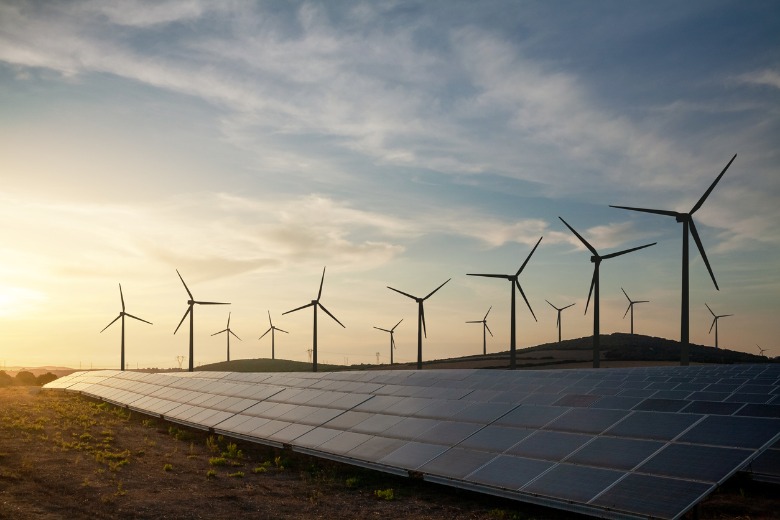
Australia’s energy market has relied on fossil fuels for residential and commercial power generation for centuries, but as we tackle the climate change crisis, we are undergoing a major transformation towards renewable energy, writes Dr Athmi Jayawardena.

To assist in achieving a low carbon future, the Australian Government has identified a range of Renewable Energy Zones across the country.
Used by governments to plan the development and implementation of renewable energy projects, Renewable Energy Zones are dedicated geographical areas which have suitable topography and land to support wind and solar farms.
These zones combine storage, such as batteries and high-voltage poles and wires, to deliver energy for residential and commercial purposes.
The effective planning of renewable energy by connecting multiple generators and storage in the same location is a cost-effective way to produce affordable, reliable and clean energy. If planned correctly, Renewable Energy Zones have significant potential to capitalise on economies of scale.
REZ sites identified
Several areas across Queensland, NSW, Victoria and Tasmania have been identified as Renewable Energy Zones. In NSW, the Central-West Orana, New England, South-West, Hunter-Central Coast and Illawarra regions have all been identified as ideal locations, with construction in Central-West Orana set to commence at the end of the year.
There has been significant interest in sites in Victoria across the Murray River, and Western and South-West Victoria, with the state government committing $540 million towards infrastructure development and the formation of a coordinating Renewable Energy Zone body.
Queensland has identified three Renewable Energy Zones, in the Northern, Central and Southern regions, with construction already underway in the Northern zone, while Tasmania has three zones across the North East, North-West and Midlands.
Local government at coal face
While state governments are responsible for identifying Renewable Energy Zones, local governments also play a crucial role in supporting them. All renewable energy projects in identified Renewable Energy Zones require planning approval from local councils. This requires councils to make submissions on renewable energy projects proposed within the Renewable Energy Zones.
It is the responsibility of local councils to ensure projects put forward for development are in appropriate locations and have strong social and economic prospects.
Councils also support Renewable Energy Zones through stakeholder and community consultation. Engaging with relevant stakeholders such as landholders, residents, local businesses, Aboriginal Advisory groups and environmental groups, through council led forums and networking opportunities, is crucial in ensuring the long-term success and acceptance of Renewable Energy Zone projects.
Emissions targets
Under the updated 2022 Nationally Determined Contribution (NDC) with the United Nations Framework Convention on Climate Change, Australia is committed to reducing greenhouse gas emissions 43 per cent below 2005 levels by 2030 and achieving net zero emissions by 2050.
The ultimate long-term goal of the Renewable Energy Zone process is to construct new and upgrade existing transmission system infrastructure that connects Renewable Energy Zones to the energy grid.
Renewable Energy Zones will deliver affordable and reliable energy generation for residential and commercial power purposes, with the aim of helping Australia achieve its 2050 net zero target.
Heavy industry companies will be key in helping private and public businesses, and government bodies, shift to a more sustainable product mix so that future generations can enjoy a sustainable Australia.
Dr Athmi Jayawardena has worked with engineering stakeholders in the evolving world of renewable energy for over a decade. She is currently Senior Power Systems Engineer at Hatch.
Comment below to have your say on this story.
If you have a news story or tip-off, get in touch at editorial@governmentnews.com.au.
Sign up to the Government News newsletter